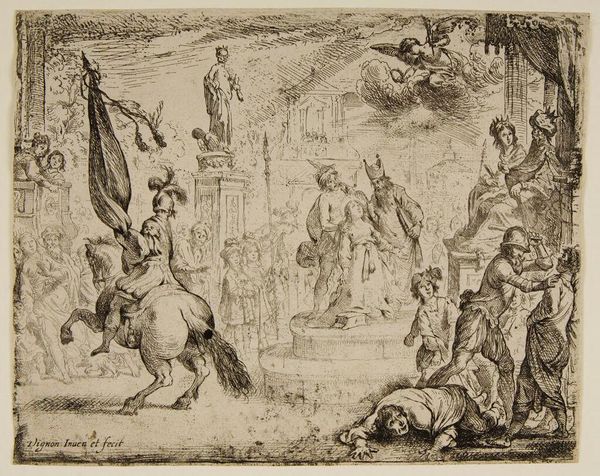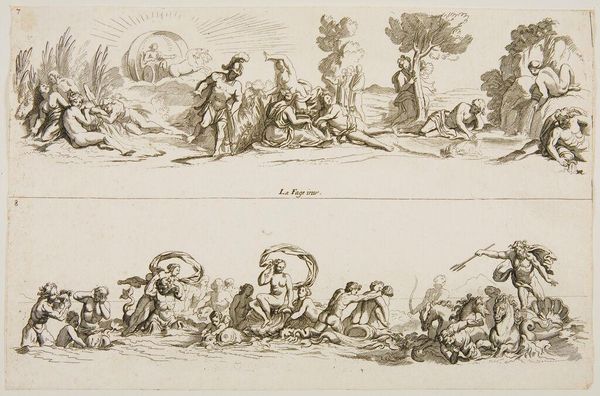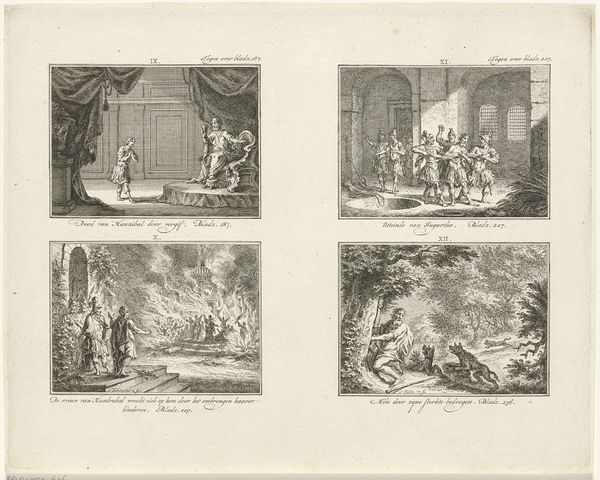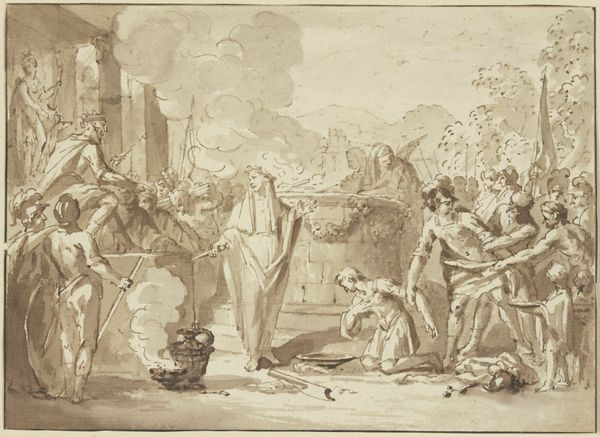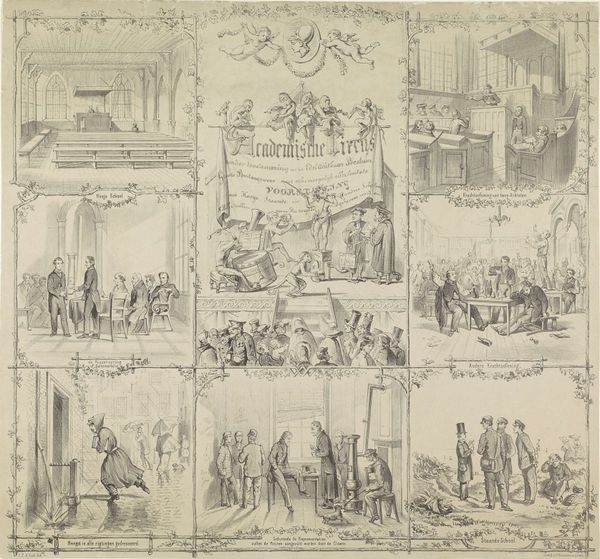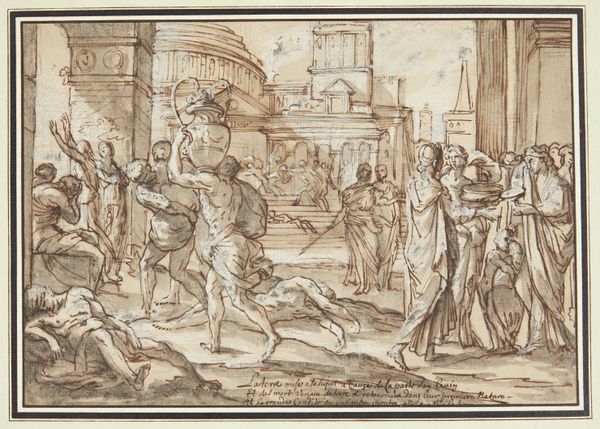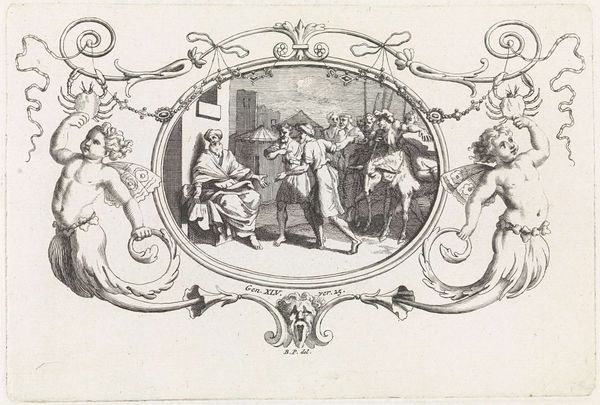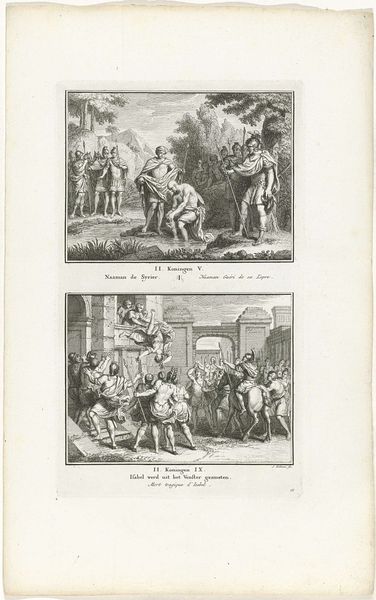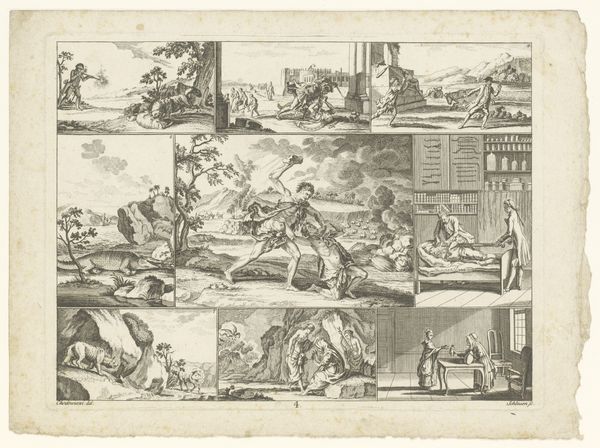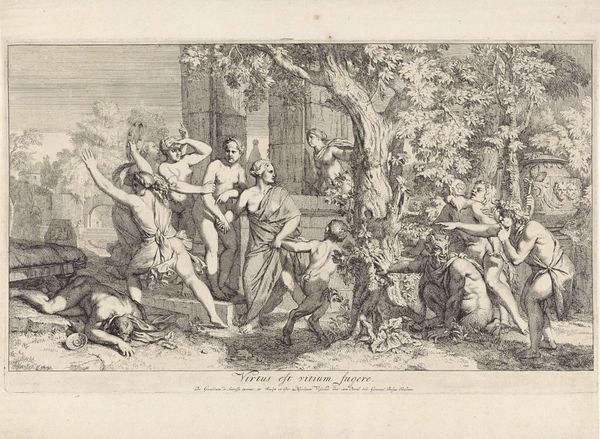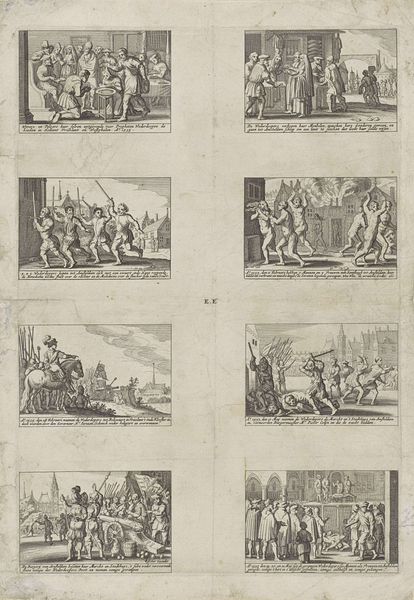
Copyright: CC0 1.0
Curator: This is a print called "Frieze," created by Johann Ulrich Kraus, who lived from 1655 to 1719. The artwork is currently housed here at the Harvard Art Museums. Editor: The composition is striking, isn't it? Two distinct scenes, parallel yet contrasting. The upper scene is brighter, more ordered, while the lower one feels chaotic, almost bacchanalian. Curator: Kraus's work often reflects the cultural ideals of his time, and this piece is no exception. Notice how the upper scene depicts a procession, likely a religious or civic ceremony, which highlights the importance of social order. Editor: Yes, but observe the use of line! The crisp, deliberate strokes in the upper frieze versus the looser, more frenzied marks below. It's a dialogue between control and abandon, rendered purely through technique. Curator: Considering Kraus's role as a printmaker, these images likely circulated widely, shaping perceptions of civic life and mythology for a broad audience. Editor: The stark contrast between the scenes amplifies the emotional impact, doesn't it? Order and chaos, restraint and indulgence – a timeless visual discourse. Curator: Indeed. It's fascinating how this single print encapsulates such a range of societal values. Editor: It leaves you wondering about the artist's intent: to contrast, to critique, or simply to depict the duality of human experience?
Comments
No comments
Be the first to comment and join the conversation on the ultimate creative platform.
